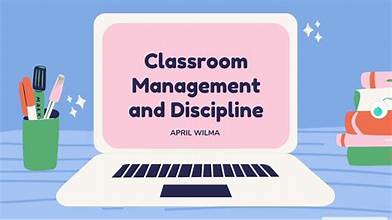
As-salāmu ʿalaykum esteemed educators,
I trust you are all energized and ready for today’s activities. Before we dive into our weekend plans, let’s take a moment to reflect on an essential aspect of our teaching: instilling discipline in our classrooms. Understand that discipline is not about punishment, but about guiding students to make better choices. Recognize that different students may need different approaches. In this digital age, discipline is not just about what we expect from our students, but also what we model as educators. .
Are You a Disciplined Teacher?
Before we expect discipline from our students, let’s ask ourselves: Are we disciplined as teachers? This question is crucial. Before instructing your pupils to turn on their video, did you ensure your own video is on? Before asking them to dress appropriately, are you presenting yourself professionally?
Discipline in the classroom starts with us. As teachers, we set the tone for the learning environment. If we want our students to take their education seriously, we must first demonstrate that same commitment.
Creating the Right Environment
Your students’ environment is your responsibility. Under no circumstances should a student be in a dark or noisy space where they cannot fully engage in the lesson. How can you measure their progress if you can’t see or hear them clearly? The environment plays a huge role in a student’s ability to concentrate and absorb information.
The Importance of Video
Keeping videos on during virtual lessons is essential. Every time you can’t see your students, there is a high likelihood (99.99%) that they are distracted by something unrelated to the class. This could explain why some students excel while others struggle—they might be disengaged without your knowledge.
Implementing Classroom Rules
- Clear expectations set a foundation for student behavior.
- Rules help students understand boundaries, which can lead to better self-regulation.
- Consistency in enforcing rules builds respect and trust.
- Involve students in the creation process.
- Keep the rules simple, clear, and positively stated (e.g., “Respect others” vs. “Don’t be rude”).
- Make sure the rules align with your overall classroom philosophy (e.g., fostering a growth mindset, promoting inclusivity).
Encouraging Proper Posture
One of the most telling signs of a student’s level of engagement is their posture. If a student is lying on a bed, sitting in an unprofessional manner, or covering themselves with a blanket, it’s a sign that they might not be giving the class the importance it deserves.
Yes, we understand that students are learning from the comfort of their homes. However, this does not mean that we should allow the class to be treated with any less seriousness. Encouraging good posture is a simple yet effective way to remind students that this is a time for focused learning.
Firmness with Compassion
Finally, be firm when necessary. Discipline does not mean being harsh or using an authoritative tone. Instead, correct your students in a respectful manner, offering guidance without resorting to shouting or harsh words. Effective discipline is about maintaining a balance between firmness and compassion, ensuring that students understand the importance of the lesson while feeling supported in their learning journey.






0 Comments